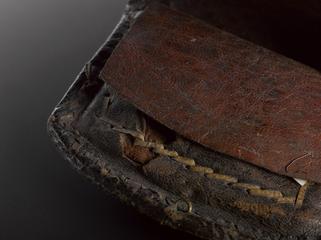




Veterinary acupuncture needles and needle tubes (Shinkan), in plastic wallet, from the surgery of a British practitioner c.1996, manufactured by Kanaken Medical Instruments Inc, Japanese, 1980-1985.
Acupuncture is a therapy used on animals as well as humans. In Traditional Chinese Medicine (TCM), acupuncture needles are inserted into certain points on the skin. This unblocks the flow through the body of a life force known as qi (chi). TCM practitioners believe qi is essential to wellbeing. These needles are of Japanese design. Long narrow handles permit the use of needle tubes used to guide insertion. Acupuncture needles for use in humans can also be used in small animals such as dogs. However, these needles are specifically for veterinary use. They differ from their human equivalent because they are significantly bigger. The needles were manufactured in Japan. They were acquired through the surgery of a British TCM practitioner.
Details
- Category:
- Asian Medicine
- Object Number:
- 2002-452
- Measurements:
-
overall: 124 mm x 221 mm x 15 mm, .29kg
shortest needle: 89 mm
longest needle: 190 mm
- credit:
- Kelley, R.




